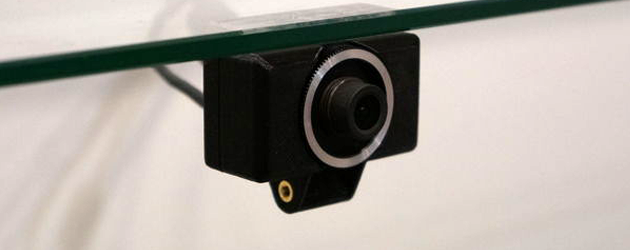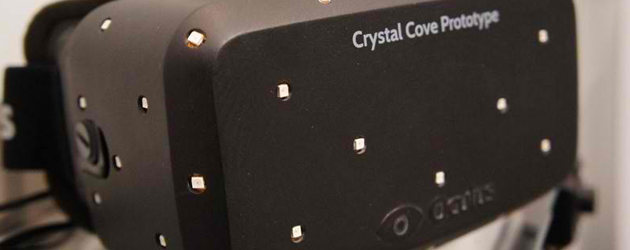Oculus VR Unveils New 'Milestone' Prototype at CES
Positional tracking and low persistence are both key features in the latest "Milestone" VR prototype from Oculus
Oculus VR has showcased its latest prototype, Crystal Cove, at CES 2014. It has two new key features that are promised to not only be in the consumer version but claim to greatly enhance the virtual reality experience. These two features are positional tracking and low persistence.
With the original Oculus Rift devkit, the equipment only tracked orientation, such as when you move your head. This was tracked very precisely, but if you leaned forward or tried to peek around a corner in a game, that particular data wasn't tracked.
With the Crystal Cove being used in addition to an external camera tracking OLEDs on the prototype, the wearer is able to move more naturally with three extra degrees of freedom. You can lean forward or back, crouch down and look underneath things, making for a more natural and comfortable experience. Right now, Oculus is going for the optimal seated VR experience with the Crystal Cove and, as of yet, it is unknown how well it will work standing up, or indeed with something like the Virtuix Omni, a VR treadmill.

The question is, why an optical tracking system? Nate Mitchell, VP of Product at Oculus said during an interview at CES that, having experimented with many systems, they want to deliver a high-end VR experience that is affordable, comfortable and with super low latency, and optical tracking felt like the way to go. Nate insists this may not be the tracking system that ships with the final product, but that they will continue to experiment. One thing's for sure - the consumer version WILL have positional tracking.
When it comes to persistence of vision, the Crystal Cove uses an OLED panel, the big difference being the reduction in pixel switching time (PST). A typical LCD has around a 15 - 35ms PST, which is the length of time it takes pixels to change color once they've been lit up. This is also independent of refresh rate and frame rate. With OLED tech, the Crystal Cove has a sub ms PST.
With the resulting low persistence, motion blur is effectively removed from the Crystal Cove panel, along with judder. Judder happens when there's a delay in visual information reaching the brain, which is exacerbated when you throw in head movement and eye movement, causing the scene to look blurry. This is thought to also cause a lot of the motion sickness typically felt when experiencing the Oculus Rift. With this combination of low persistence and positional tracking, the latency is being significantly reduced, making the display a lot more natural for the eye. Indeed, Nate Mitchell claims the Crystal Cove to be "the most comfortable VR prototype that we've ever shown."

Nate also explained what has to be done in order to create low persistence, and it truly is a fascinating - and clever - solution. Pixels are lit up and then turned off rather than having them on all the time, which - when you turn your head - sends the wrong image to the brain before righting itself. With this newest prototype; pixels are lit up and turned off at a high frequency in a strobing effect, so fast that it doesn't cause flicker.
Oculus VR wants the consumer version to have a sub 20 ms latency, and this would appear to be its next challenge. Currently the latest prototype is at 30-40ms depending on the content being shown. Nate was reluctant to share how this latency would be reduced but suggested that it could be achieved by continuing to optimize technology and through positional tracking and display technology getting better, but he did say that they have some tricks up their sleeve in terms of software and that John Carmac (Oculus CTO) is investing a lot into reducing motion-to-photons latency.
As an owner of the Oculus Rift devkit and a supporter of VR technology, I am very excited at these developments and will endeavor to "stay tuned" as Nate Mitchell suggests.
Penny for your thoughts,
Follow me on Twitter: @QelricDK
